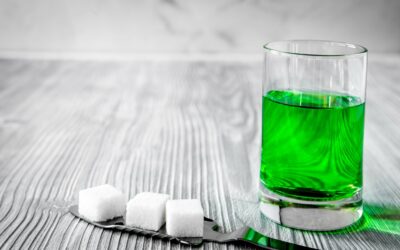Contents
The former statistics may have fallen in recent years, however, as the percentage of smokers in the United States dropped over 5% (from 20.9%) between 2005 and 2015. Kettering Health is committed what it is like living in a sober house to transforming the healthcare experience for every person in our community. Participants receive eight weeks of nicotine patches, gum, or lozenges delivered to their homes at no cost.
Rehab facilities don’t allow you any kind of leeway when it comes to drugs or alcohol. Others have a super structured environment where you are only allowed out a few times per day. Treatment centers will be more than willing to help you with educational materials, nicotine patches, and other medical smoking cessation aids to help promote a healthier lifestyle during your stay and long after. Discontinuing smoking while in a tobacco-free detox can also increase withdrawal symptoms and cravings in general, as nicotine is itself an addictive substance that promotes physical and psychological dependence. In 2008, publicly-funded rehab centers in the state of New York were legally required to ban smoking on-site, likely to combat other addictive behaviors besides drug and alcohol use. Sunshine Behavioral Health strives to help people who are facing substance abuse, addiction, mental health disorders, or a combination of these conditions.
What is the best treatment to stop smoking?
Nicotine patches, gum, and lozenges are the most common quit-smoking medicines, and you can buy them without a prescription (over-the-counter).
The report took it as a given that cigarette smoking correlates with adverse outcomes in addiction recovery. The point of the study was actually to compare cigarette smokers with a history of SUD to smokers without a SUD history. The researchers wanted to determine whether or not those with past SUDs relapsed on tobacco more or less often than those without.
Nicotine Rehabilitation Statistics
In the case of addiction treatment facilities, however, you’re likely to find that smoking and vaping are allowed, but that there are designated areas for these activities. Americanaddictioncenters.org needs to review the security of your alcohol use disorder vs alcoholism connection before proceeding. Wellbutrin and Zyban are the brand names for bupropion, a prescription antidepressant that triggers some of the same receptors as nicotine to ease withdrawal symptoms and help reduce your desire to smoke.

More than 1,900 people have been treated since the program began in 1992. This guide was written to provide an overview of the nicotine rehabilitation process as well as to offer helpful resources for persons recovering from nicotine addiction. Manufacturers market tobacco products for enjoyment, satisfaction, pleasure, and refreshment.
How Family Can Play an Important Role in Addiction Recovery
Tobacco can affect people socially, emotionally, mentally, and physically. But yet, cigarettes are sold at the counters of convenience stores all over the country. This is because people are still buying cigarettes after knowing the harm that tobacco can cause. For more information regarding available addiction recovery options, please contact a treatment specialist at Ark Behavioral Health today. As such, smoking policies are likely of particular concern for those considering a stay at a drug rehab center. Moreover, those with substance use disorders tend to quit smoking less often than others, according to the National Institute on Drug Abuse.
About 4 to 24 hours after you stop using nicotine, withdrawal starts in earnest and generally peaks on the third day. The severity of your withdrawal symptoms largely depends on how you consumed nicotine and how chronic a user you were. Withdrawal symptoms begin tapering off in three to four weeks, but cravings for nicotine can last for years. The first step to quitting smoking or other nicotine products is establishing why you want to quit because having a good reason to quit serves as motivation when detoxification causes uncomfortable withdrawal symptoms.
Which fruit is good for smokers?
Vitamin C (amla, citrus fruits, lemon, pineapple, guava) is important for smokers too, as it can effectively help neutralise the free radicals that smoking creates in the body — and help maintain immunity.
Choosing recovery close to home means your support system is just a few miles away. Program participants support one another in their efforts to live tobacco free. Healthy meals are encouraged as an important part of the recovery process. Experienced support staff members are present in the evenings and overnight when in nonstructured programming for your safety and comfort. However interesting, this is a long, long way from proving that Viagra reduces Alzheimer’s risk, which will require a clinical trial.
Nicotine Detoxification & Withdrawal Process
Often, what works best is when a smoker has a powerful and personal reason to want to quit. Seeking treatment for your alcohol or drug addiction and making the decision to begin a fresh chapter in your life may be the mental “push” you need to kick the habit for good. A preponderance of available data indicates that you shouldn’t smoke while in rehab for substance use disorders . In recent years, several studies have demonstrated a link between smoking and undesirable outcomes for drug or alcohol addiction. Behavioral therapy for substance addiction seeks to identify and manage addictive behaviors that lead to tobacco use and helps prevent relapse. NRT products contain nicotine, so they can also be addictive, taking the place of smoking instead of helping you break your nicotine addiction.
Ark Behavioral Health offers 100% confidential substance abuse assessment and treatment placement tailored to your individual needs. And, for some, rehab presents a golden opportunity to give up not only drugs or alcohol but nicotine as well. Unfortunately, when many give up drugs or alcohol and fall back on smoking it can lead to greatly increased tobacco consumption, with serious long-term consequences. In 2005, a research paper found that of the 408 United States treatment centers surveyed, over 90% banned indoor smoking by staff and patients.
Treatment Methods for Tobacco Dependence
One includes products that contain nicotine and works by giving you small doses of nicotine while eliminating other dangerous chemicals found in cigarettes. The purpose of these products is to help you wean yourself off nicotine and help ease withdrawal symptoms. The second type includes prescription medications that don’t contain nicotine and are used to ease withdrawal symptoms and block the effects of nicotine should you relapse. Nicotine replacement therapies were the first medication-assisted treatments approved by the FDA for smoking cessation therapy. Currently, the FDA approves chewing gum, lozenges, transdermal patches, inhalers, and nasal sprays to deliver low doses of nicotine and relieve withdrawal symptoms while you try to quit.
The FDA also approves non-nicotine prescription medications containing bupropion or varenicline to help people quit smoking. If you ask all the rehab facilities if they want their patients to smoke, the answer is a resounding no. Sure, smoking may be less dangerous in the short term than drugs or alcohol, but we all know that cigarettes come with a lot of collateral when it comes to your long-term health. Smoking causes serious lung disease like lung cancer and emphysema, COPD, Asthma, heart and cardiovascular disease, it increases your chance of other cancers, and much more. In the U.S.,New York was the first state to prohibit smoking in all addiction rehabilitation facilities.
Tobacco is highly likely to rob you of your victory against another substance later in life. Dr. Keith Roach is a physician at Weill Cornell Medical College and New York Presbyterian Hospital. He writes an educational column on infectious diseases, public health and sports medicine.

Many inpatient facilities that treat alcohol and drug addiction can also treat nicotine dependence, but these might not appeal to someone who only wants to quit smoking. However, if you want to quit smoking and you’re seeking treatment for abuse of alcohol, illicit drugs, and/or prescription drugs, an inpatient facility with smoking/tobacco cessation services may be the answer. However, nicotine dependence doesn’t generally require a long-term inpatient treatment plan. Visit a doctor or call one of the national nicotine Quitlines for help creating a quit smoking plan. Share your desire to quit with others so they can help support your commitment.
Nicotine releases dopamine, which makes it pleasurable to use and hard to quit on your own. Physical and mental cravings, sometimes prompted by stress and sensory cues, make it even more difficult to quit and remain nicotine-free. In a 1988 report by the Surgeon General that declared cigarettes were addictive and the primary agent of addiction was nicotine, nicotine addiction was compared to heroin and cocaine addiction. Like these illicit drugs, nicotine activates the brain’s reward center, making it just as hard to kick the habit.
- There are some short-term residential facilities with programs that typically last four to eight days, and outpatient programs involve scheduled appointments at a clinic or health center.
- It is important to keep in mind that the recovery process will be different for everyone.
- Family members bringing cigarette packs to their loved ones in a rehab center is a common occurrence.
- Whether it is alcohol, cocaine, or heroin, your mind and body need to go through the withdrawal and detoxification process.
However, the health benefits of quitting smoking can be seen almost immediately. For example, your heart rate and blood pressure will be back to normal within two hours. Within how to create a meaningful life in 7 days and make two to three weeks, your blood circulation and lung function should improve enough that exercising or engaging in physically strenuous activity will be noticeably easier.
